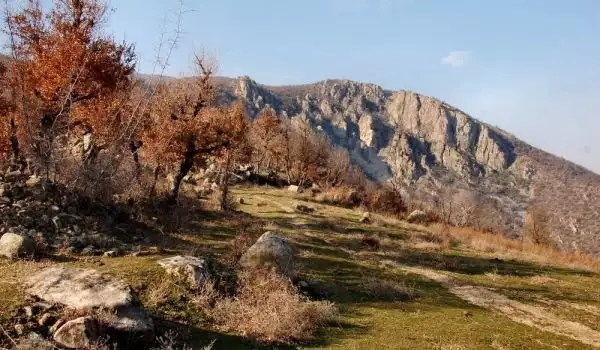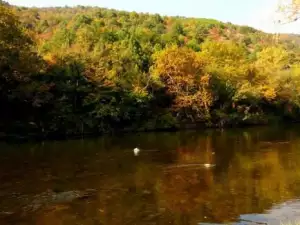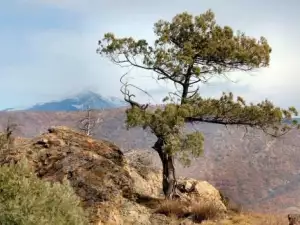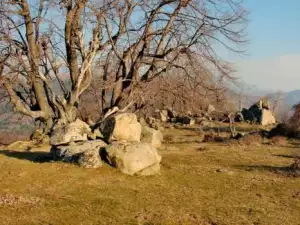Tisata Nature Reserve

Tisata Nature Reserve was founded in 1949 under the ordinance of the Ministry of Agriculture and Forestry, originally under the name Tisova Burchina. In 1977, the reserve's territory was expanded and it was renamed Tisata Nature Reserve. 8 years later, in 1985, the boundaries and area of the reserve were changed by a law that outlined a buffer zone for the reserve.
The reserve's current borders and buffer zone were determined by an ordinance Ministry of the Environment and Water in 1991. The goal of creating this reserve is to preserve the largest assortment of Greek junipers (Juniperus excelsa) in the country.

Tisata consists of 2 sections - east and west. They take up part of the Pirin foothills - about 984 ft (300 m) - 2296 ft (700 m) above sea level and Maleshevska Planina, which spreads north from the town of Kresna at 984 ft (300 m) - 1640 ft (500 m) above sea level.
Tisata Nature Reserve falls within the protected zones as part of the European Ecological Network Natura 2000. Tisata is listed as a protected area for the Kresna birds and also as a protected area for preserving natural habitats of wild flora and fauna.
There is an exceptionally rich biological diversity within the territory of the reserve. Nearly 80% of the reserve's area has been planted with new trees, mainly Greek junipers. It is a protected southern relict species of Anatolian origin. Greek juniper grows up to 49 ft (15 m) tall, and sometimes the trunk diameter of older trees is as much as 3.3 ft (1 m).

This tree species forms pure or mixed plantations with other plants, such as Oriental Hornbeam (Carpinus orientalis), pubescent oak (Quercus pubescens) and manna ash (Fraxinus ornus). Representatives of the turpentine tree and red juniper can also be seen, as well as large number of Mediterranean herbaceous plants, such as Fritillaria orientalis, Colchicum bivonae, Anemone pavonina and Tulipa australis Link.
The English yew (Taxus baccata), an endangered species, is characteristic of Tisata and is included in Bulgaria's Red Book of endangered species. This is an exceptionally slow-growing evergreen tree that can grow as tall as 98.5 ft (30 m). Its needles contain the alkaloid taxine. Taxine is toxic to both animals and humans.
Tisata Nature Reserve is home to over 109 species of birds, of which about 30% belong to the southern complex - among these are blue rock thrush, western Orphean warbler, Eurasian blackcap, subalpine warbler, lesser whitethroat, masked shrike, western rock nuthatch and others. There are also 62 species of birds on the reserve's territory that are of conservation concern.

One of the most valuable features of the nature reserve is its rich herpetofauna. Tisata Nature Reserve is home to 11 out of the total 16 snake species that have been found on Bulgarian territory. Ones that stand out are the European cat snake (Telescopus fallax), European blind snake (Typhlops vermicularis) and European ratsnake (Zamenis situla), while among turtles there are the spur-thighed tortoise and Hermann's tortoise.
Some of the animal species that inhabit the territory of Tisata Nature Reserve are only found in that region or have a limited distribution. The reserve is of international importance when it comes to bird conservation and is one of the five regions in Bulgaria that have been designated to preserve species typical of the Mediterranean biogeographical region. Birds that nest in Tisata include the Spanish wheatear, rock partridge, the great olive warbler, Sardinian warbler, short-toed eagle and others.
Tisata Nature Reserve is protected. According to law, any and all human activity is prohibited on the protected territories of Tisata. Access to Tisata is limited. Hiking is only allowed on specific trails and any park visitation needs to be approved beforehand by the management of Pirin National Park.
More news
- New
- Last commented